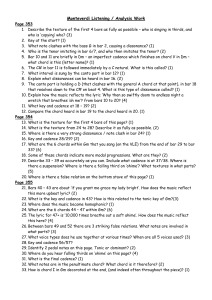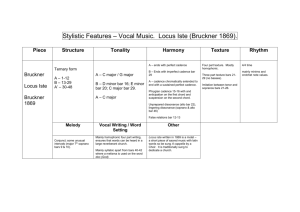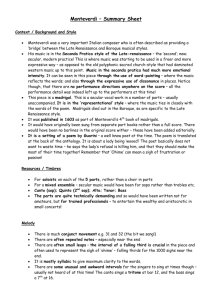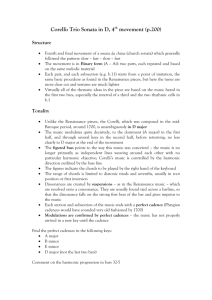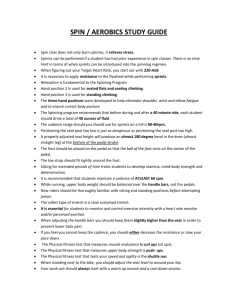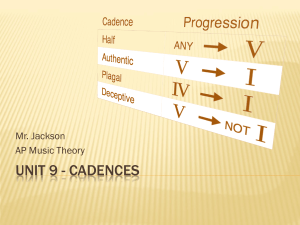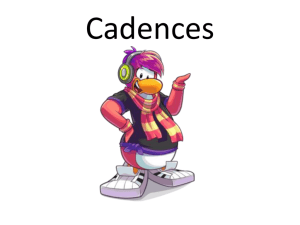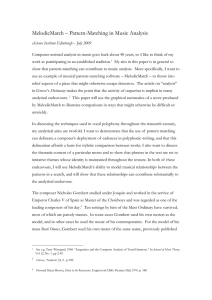the tutorial handbook for this resource - Teachnet UK-home
advertisement
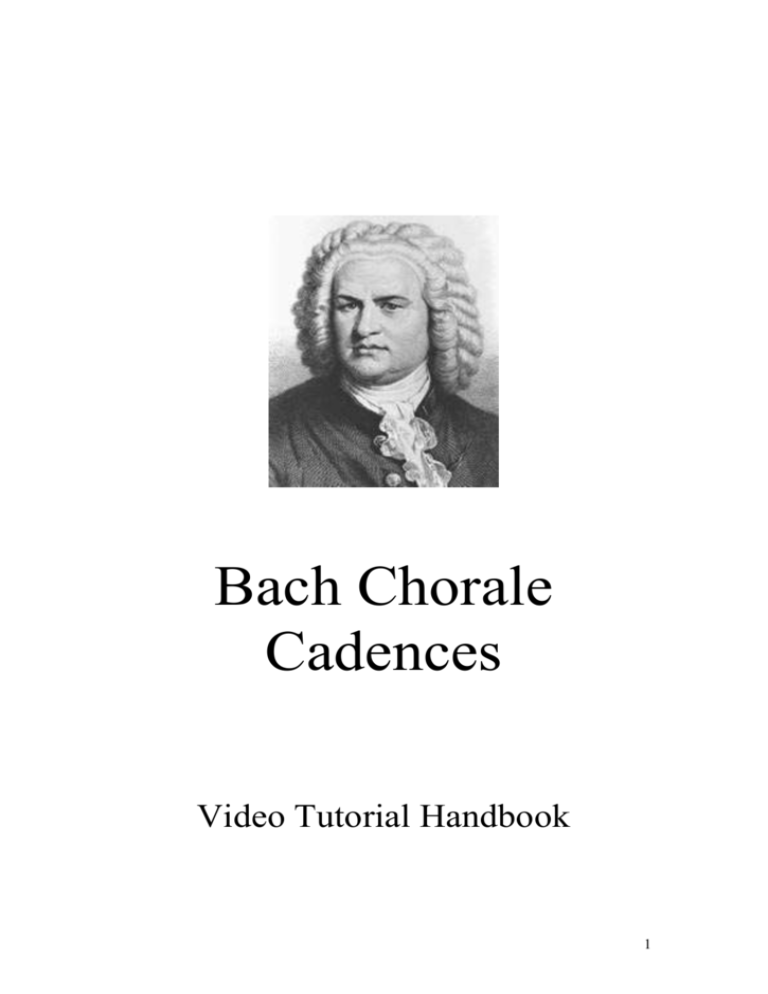
Bach Chorale Cadences Video Tutorial Handbook 1 Using the audio-visual material available, along with the items in this handbook will enable you to learn how to harmonize chorale cadences in the style of J.S.Bach. If you have your own computer copy all of the files to your hard drive. Start with the PowerPoint Introduction filename : Bach Chorale Cadences.pps If you double click on this file it will open automatically if PowerPoint is installed on your computer. Advance the slides using the up and down arrow keys on your keyboard. Work through the Video Tutorials in order along with the associated exercises using this scheme. Week 1 Week 2 Week 4 Revision Tasks 1. View PowerPoint Introduction 2. View Tutorial 1 : ii7b-V-I 3. Build cadences during video using worksheet provided. 4. View Tutorial 2 : ii7b-V-I Variants 5. Build cadences during video using worksheet provided 6. Update Cadence Tracking Sheet on Intranet 7. Complete Exercises 1, 2 ,3 and 4 8. Check your answers against solutions 9. Update Cadence Tracking Sheet on Intranet 1. View Tutorial 3 : V-V-I 2. Build cadences during video using worksheet provided 3. Complete Exercises 5 and 6 4. Update Cadence Tracking Sheet 1. View Tutorial 4 : Other Cadence Patterns 2. Complete Exercise 7 3. Check your answers against solutions 4. Update Cadence Tracking Sheet 1. Complete Exercise 8 2. Check your answers against solutions 2 HINTS Work in pencil. It is then easy to correct or amend your work. Establish a good routine : o Number the melody above the soprano with Arabic numerals indicating the degree of the scale o Label the chords with Roman Numerals underneath the Bass Stave. o Add the Bass Line following the Roman Numerals o Check Soprano / Bass for consecutives – make adjustments if any are found o Add the Alto and Tenor parts aiming for smooth conjunct motion as much as possible. o Check for consecutives o Try to play through your work on a keyboard Check your version with Bach’s by using the solutions. It will help you learn if you analyse Bach’s version, by labelling the chords, and compare it with yours. Don’t necessarily expect an exact match – if you are using the correct chords and using Bach’s signature stylistic devices you will be doing well. If you are far out in comparison to Bach’s, try to see what he has done in response to this situation and reproduce it when you encounter something similar. The solutions appear versions in both MS Word and Sibelius. If you are working at a computer running Sibelius you will be able to hear as well as see the results. CONTENTS 1. Worksheet : Tutorial 1 : Building the Cadence ii7b-V-I 2. Worksheet : Tutorial 2 : Building the Cadence ii7b-V-I (Dissonance in Tenor) 3. Exercise 1 4. Exercise 2 5. Exercise 3 6. Exercise 4 7. Worksheet : Tutorial 3 : Building the Cadence V-V-I 8. Exercise 5 9. Exercise 6 10. Exercise 7 11. Exercise 8 Appendix : Table : What Cadence Should be Used? 3 4 5 6 7 8 9 10 11 12 13 14 15 What Cadence Should be Used? Scale Degree of Phrase Ending 1. Tonic Cadence Perfect Phrase Ending (Movement of Soprano) 2-1 : ii7b-V-I, or variants, or V-V-I with a 4-3 suspension, or any other perfect cadence with a suitable approach chord. 7-8 : V-I with any suitable approach chord 2. Supertonic Imperfect (not possible to modulate to the Dominant) 1-2 (both keys – very common) : Precede V with I or Ib, or both eg. I-Ib-V 3. Mediant Perfect 2-3 (Major Key) : V-I with any suitable approach chord 4-3 (Major Key) : V7-I with any suitable approach chord 2-3 or 4-3 (Minor Key) : Modulate to the Relative Major. 4. Subdominant Modulate Use a perfect cadence in the new key. 5. Dominant Imperfect or Modulation to the Dominant 4-5 (both keys- rare) : Try to use IVb-V #4-5(both keys) : Modulate to the Dominant 6-5 (both keys) : Precede V with a dominant preparation chord OR Modulate to the Dominant. 16 6. Submediant Modulate Use a perfect cadence in the new key. 7. Leading Note Imperfect 6-7 or 8-7 (Major Keys) : precede V with any suitable chord (7a.Subtonic-minor key only) Modulation to key of the Subtonic 6-b7 or 8-b7 (Minor Keys only) : Modulate using a perfect cadence in the new key. Cadences Moving by Leap 3-1(both keys) : Use the Passive Cadence (I-IV). Other instances (both instances) : Modulate to the key that will yield a perfect cadence. 17

